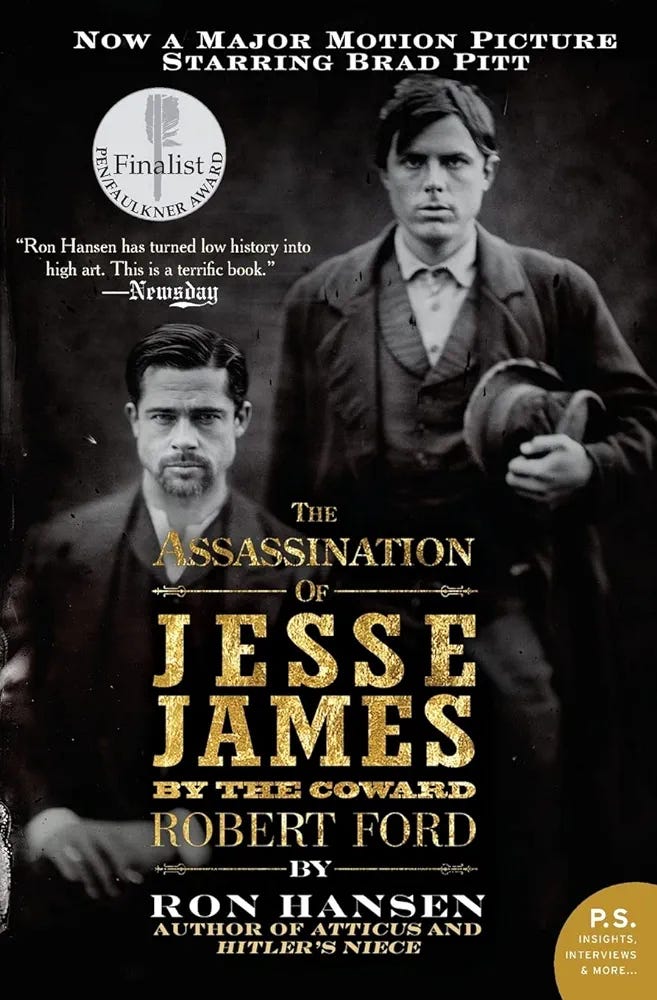Tuesday was a novel day - literally, and literarily. I had the privilege and pleasure of having coffee with novelist Ron Hansen; a wonderful conversation about writing, the Church (Ron is a permanent deacon), and a host of other subjects.
And this was followed by a visit to the grave of F. Scott Fitzgerald.
Ron is perhaps best known for the novel “The Assassination of Jesse James by the Coward Robert Ford,” adapted into the movie starring Brad Pitt and Casey Affleck.
He has written ten novels, including Mariette in Ecstasy, Atticus, Hitler’s Niece, Exiles, and my personal favorite, A Wild Surge of Guilty Passion. If you’re not familiar with his work, you can watch a recent interview of him and fellow writer Christopher Beha on the New York Encounter YouTube channel here.
F. Scott Fitzgerald’s mortal remains are interred in the graveyard of St. Mary’s Church (Rockville, MD) just five minutes from the coffee shop.
The story of his burial is a curious one, and was recounted in a 2015 article by Matt Blitz in The Washingtonian:
He died in Los Angeles in 1940. His wife, Zelda, knew her husband wished to be buried in his family plot in the Catholic cemetery in Rockville. She instructed those in care of his body to send him back east. There was one problem: Fitzgerald’s tenuous relationship to the Catholic faith.
When Fitzgerald arrived at the cemetery, the church that owned the cemetery at the time refused his burial. According to witnesses, it was because he had not fulfilled his “Easter duties” and was “unfit to be buried alongside good Catholics in consecrated ground.” Fitzgerald’s hard-living reputation had followed him to his grave. Instead, Zelda paid for him to be buried a mile down the road in Rockville Cemetery. In 1948, Zelda joined him when she died tragically in a fire. She was buried on top of him because Zelda had only bought one space. That’s where they sat for 27 years.
In 1975, members of the Rockville Women’s Club noticed the Fitzgeralds’ grave was crumbling and deteriorating. Talking with family members revealed that the Fitzgeralds should have been buried down the road. The case was taken to the Archbishop of Washington, William Baum, who immediately gave his blessing to allow the Fitzgerald’s to be reburied at St. Mary’s. In a statement, he said that Fitzgerald was “an artist who was able with lucidity and poetic imagination to portray the struggle between grace and death. His characters are involved in this great drama, seeking God and seeking grace.”
Today, Zelda and F. Scott lie together in eternal peace at the now-called St.Mary’s Church Historic Cemetery in Rockville, Maryland. Written on their gravestone is the last line from The Great Gatsby: “So we beat on, boats against the current, borne back ceaselessly into the past.”





